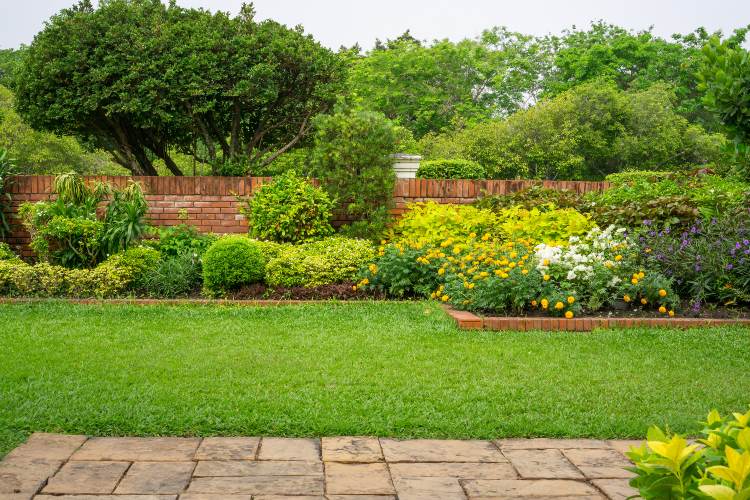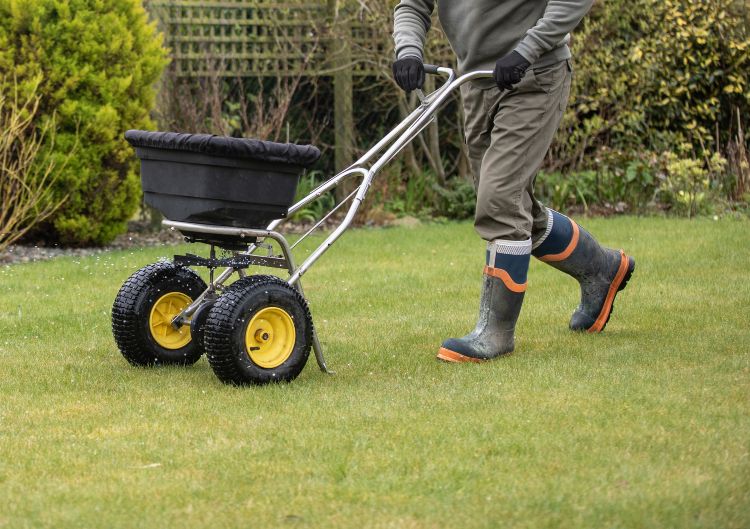How Much Fertilizer Does My Lawn Need?
Fertilizing your lawn plays an important role in its overall health and appearance by replenishing essential nutrients that grass depletes from the soil over time. These nutrients, including nitrogen, phosphorus, and potassium, promote robust leaf growth, deep green color, strong root development, and enhance the lawn’s resilience against stressors such as drought, disease, and wear. As grass consumes these nutrients, they must be periodically replaced to maintain a lush, vibrant lawn. The process of fertilization not only ensures that your grass receives the food it needs to grow thick and strong but also helps it recover more quickly from various stresses, including foot traffic and environmental conditions.
A well-fertilized lawn is less susceptible to weed invasion and diseases. Thick, healthy grass suppresses weeds naturally by outcompeting them for resources like sunlight, water, and nutrients. Additionally, a lush lawn enhances the curb appeal of your home, provides a cooler surrounding environment, produces oxygen, and can filter out pollutants from rainwater. Regular fertilization is not just about achieving an attractive landscape; it’s also about contributing to a healthier environment and ensuring the longevity and vitality of your lawn.
Today we’ll explore lawn fertilizer, the process of determining how much fertilizer your lawn needs, the appropriate fertilizer ratio, and the best practices for applying it.

How Much Lawn Fertilizer Is Needed?
The amount of fertilizer your lawn requires depends on various factors, including the type of grass, soil condition, and the specific goals you have for your lawn. Generally, a lawn needs about 1 pound of soluble nitrogen per 1,000 square feet every six to eight weeks during the growing season. For slow-release fertilizers, the application rate may be slightly different.
What Is the Right Fertilizer Ratio for a Lawn?
The right fertilizer ratio for a lawn typically falls within the range of 3-1-2 or 4-1-2 (nitrogen-phosphorus-potassium). This ratio may vary based on soil test results and the specific needs of your lawn. A soil test can provide detailed insights into your soil’s nutrient levels and help tailor the fertilizer application to your lawn’s requirements.
How Can I Determine the Amount of Fertilizer I Need?
To determine the amount of fertilizer you need, start by conducting a soil test. This will tell you which nutrients are lacking. Then, calculate the size of your lawn in square feet. Use the fertilizer’s label, which indicates the percentage of nutrients, to calculate the exact amount of product needed to cover your lawn adequately.
Does My Grass Need to Be Fertilized Every Two Weeks?
Fertilizing your grass every two weeks is not recommended as it can lead to excessive growth, increased vulnerability to pests and diseases, and potential environmental harm. Stick to the guidelines provided by the fertilizer manufacturer and consider the specific needs of your lawn type. Some fertilizers recommend using only once or twice per year. When in doubt, less is more.
What Happens to My Lawn if I Fertilize It Too Much?
Over-fertilizing can harm your lawn, causing nutrient burn, which leads to yellowing or browning of the grass. It can also result in an unhealthy growth spurt that stresses the grass and depletes soil nutrients, making your lawn more susceptible to disease and pests.
Which Month Is Ideal for Fertilizing My Lawn?
The ideal time to fertilize your lawn varies depending on your climate and the type of grass. Generally, the best times are during the growing seasons in spring and fall. This timing allows the grass to strengthen its root system before the peak growing and dormant seasons.

How Long Does It Take for Grass to Go Green After Fertilizer?
The time frame for grass to exhibit a greener appearance after application of fertilizer is influenced by a variety of factors, such as the grass type, the specific fertilizer used, prevailing weather conditions, and the lawn’s maintenance status before fertilization. In general, one may observe greening effects within a few days to a week when using fast-acting liquid fertilizers. However, for granular fertilizers, which are designed to release nutrients more slowly, the process may extend to a few weeks before noticeable results are seen. The distinction between the two types of fertilizers lies in their rate of nutrient release and absorption by the grass, with liquid fertilizers providing a quicker response and granular slow-release fertilizers offering a more gradual improvement in lawn color.
Environmental conditions significantly impact the effectiveness and speed at which fertilization leads to a greener lawn. Optimal results are often achieved under warm and moist conditions that facilitate rapid nutrient absorption, whereas cooler or dryer climates might delay the greening process. The initial health and condition of the lawn also play a role; lawns that are well-maintained, devoid of weeds and diseases, tend to respond more favorably and swiftly to fertilization compared to those that are neglected or in poor condition. Choosing the right type of fertilizer, understanding the influence of weather, and maintaining a healthy lawn are key factors in achieving a lush, green outdoor space.
After Fertilizing My Grass, How Much Water Should I Give It?
Watering is important after fertilizing. You should lightly water your lawn immediately after applying fertilizer to help move the nutrients into the soil. Then, return to your regular watering schedule, ensuring your lawn receives about 1 to 1.5 inches of water per week.
If you need help with your lawn, give Black’s Lawn & Junk a call! We have been in business for over 10 years, installing, renovating, and maintaining commercial and residential landscaping throughout Weber, Davis, and Box Elder Counties. We bring our expertise to every job we do, big or small. Whether you need help with your lawn fertilization, maintenance, sprinkler repair, landscaping, junk removal, or just have some questions, our professionals are ready to help you. Contact us today and let Black’s Lawn & Junk help give you the lawn of your dreams.
